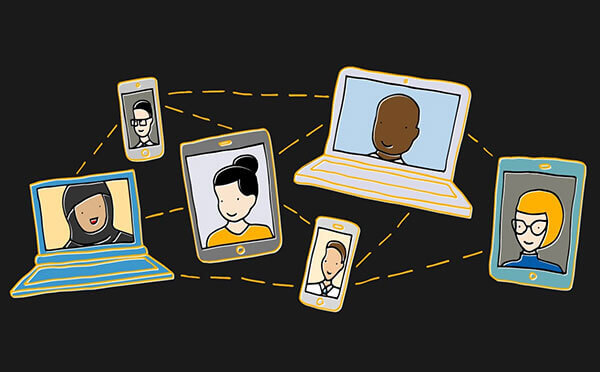
CEO’s Blog – We built a virtual office – here’s what I learned
Ten years ago I began seeing stories about the ‘death of the office’. Teams will all work remotely from their smartphones by 2020, headlines said, and entrepreneurs will be able to start and run businesses from a boat in the Bahamas.
Of course, here we are in, in 2020, and the majority of businesses still operate an office, even if they have some people who work flexibly or remotely.
At BigChange, most of our people still work out of our office. When I speak to managers here, many of them still like having a fixed location where colleagues can come together. “It’s easier to spot problems before they become an issue when you’re around your colleagues every day,” explains my customer services director. “And an office is very useful when training new people, as they can shadow their more experienced colleagues and be easily monitored and mentored.”
So the office isn’t dead after all. However, there is a pressing need for all companies to be able to operate virtually.
I posted last week about the potential impact of coronavirus on UK companies. If this becomes the epidemic that we all fear, employees will have to work from home in order to “self quarantine”. There are other threats facing companies that do not embrace virtual working. What if your landlord suddenly closes your office building? What if there is a flood or a major leak and the office is compromised? Could you carry on as normal? With no disruption to customers or your service quality?
I learned a lot about potential business threats when BigChange went through the ISO9001 process. We had to make business continuity a priority, no matter what random threat or ‘act of god’ strikes the company. It was this process that helped us take the leap into becoming a truly virtually enabled business.
We are luckier than most because we are a technology company. All of our processes and services are virtual by definition. We use our own BigChange software to log and monitor jobs. All the calls that come through to us are handled by a voice-over-IP (VOIP) provider, so they are filtered through to the right person, who gets a pop-up on BigChange with the name of the caller.
However, it’s easy to appear virtual on paper but it’s another thing for a virtual office to work in practice. That is why BigChange runs a remote working test every three months. This ensures that colleagues are always prepared to work virtually, and exposes any weaknesses in our virtual structure.
For other business owners who want to try the test, here’s how it works:
You tell your team about the test the night before, when they are already home. This ensures they always have the correct work equipment with them. For us that’s a laptop, charger, and headset. They also have to check they have access to good wifi.
Before starting work, they fill out a risk assessment on BigChange, to confirm their home environment is fit for work.
They do their day’s work, and everything is handled just as it would be at the office, except that meetings take place virtually on Teams, and people need to be a bit more diligent about tagging the right colleagues on BigChange tickets (as they can’t just shout over their shoulder)
At the end of the day, there is another workflow, which asks how the process went, whether people felt hindered in their work, whether anything was more difficult as a result of working remotely.
We measure productivity after each test and, so far, it is at the exact same level at home and at the office. My colleagues report that they really enjoy working remotely, and have no issues using the technology, which is also really important.
We ran our last test on Friday, when every single member of the BigChange team worked from home. There were no issues, and everything passed off smoothly.
I am also working on solutions to some of the concerns raised by my managers. We need a virtual training programme, for example. And it may be necessary to have more regular check-in meetings on these “virtual days” to ensure that leaders feel connected to their teams.
We have proved that it’s entirely possible to take a traditional office-based business and run it with an entirely remote workforce.
Whether it’s the right move long-term will vary from business to business, but when it comes to business continuity, building virtual capability into your model is a no brainer.
